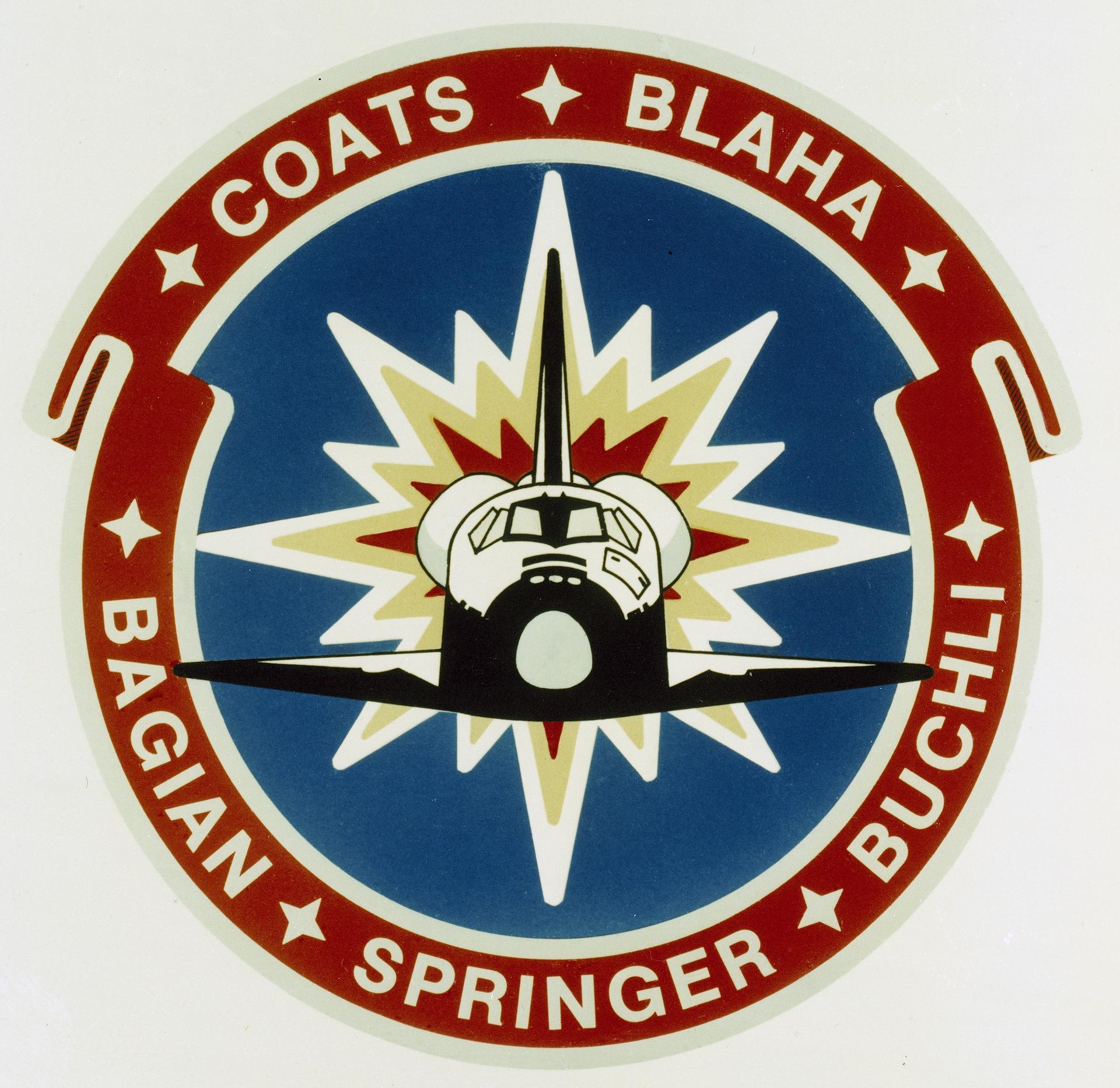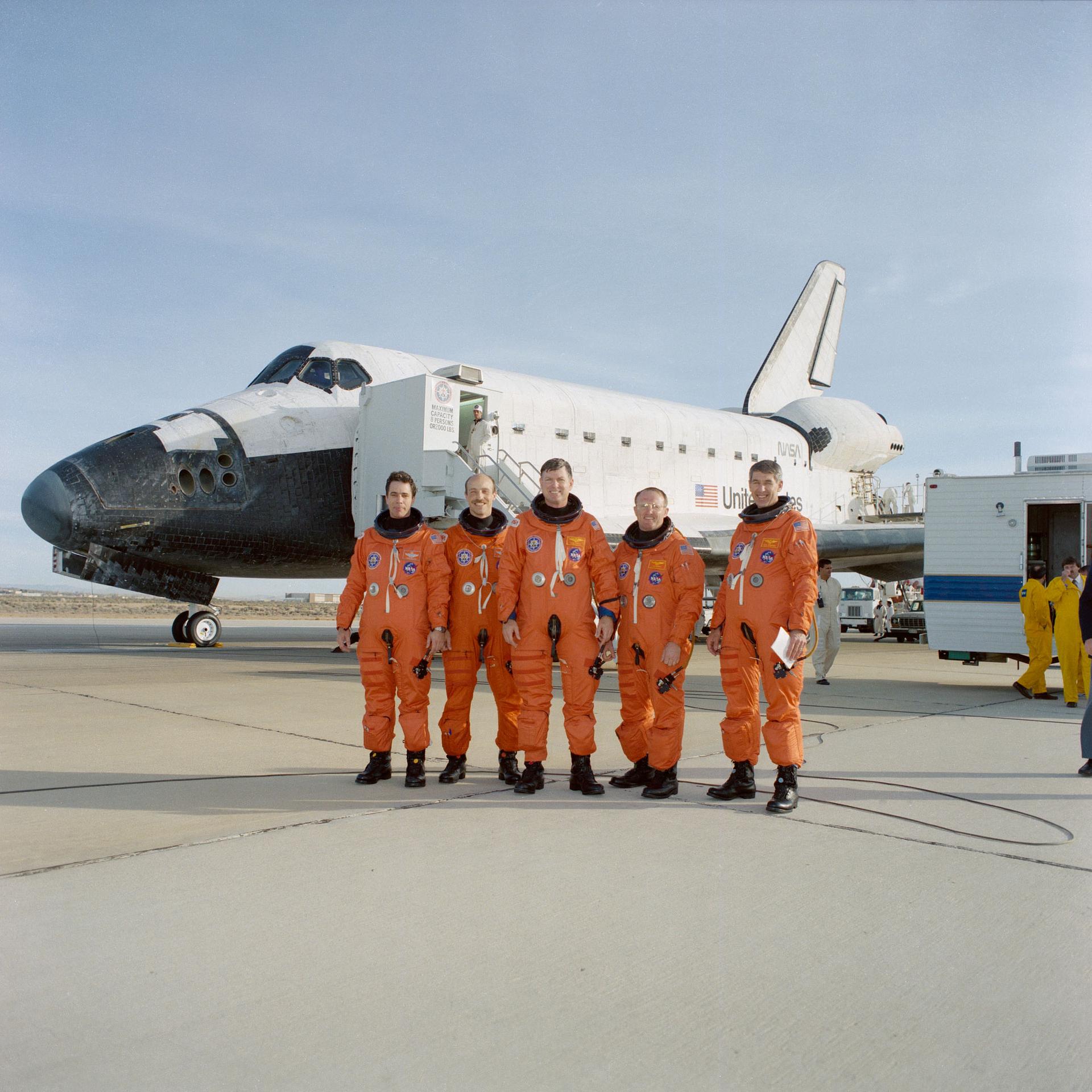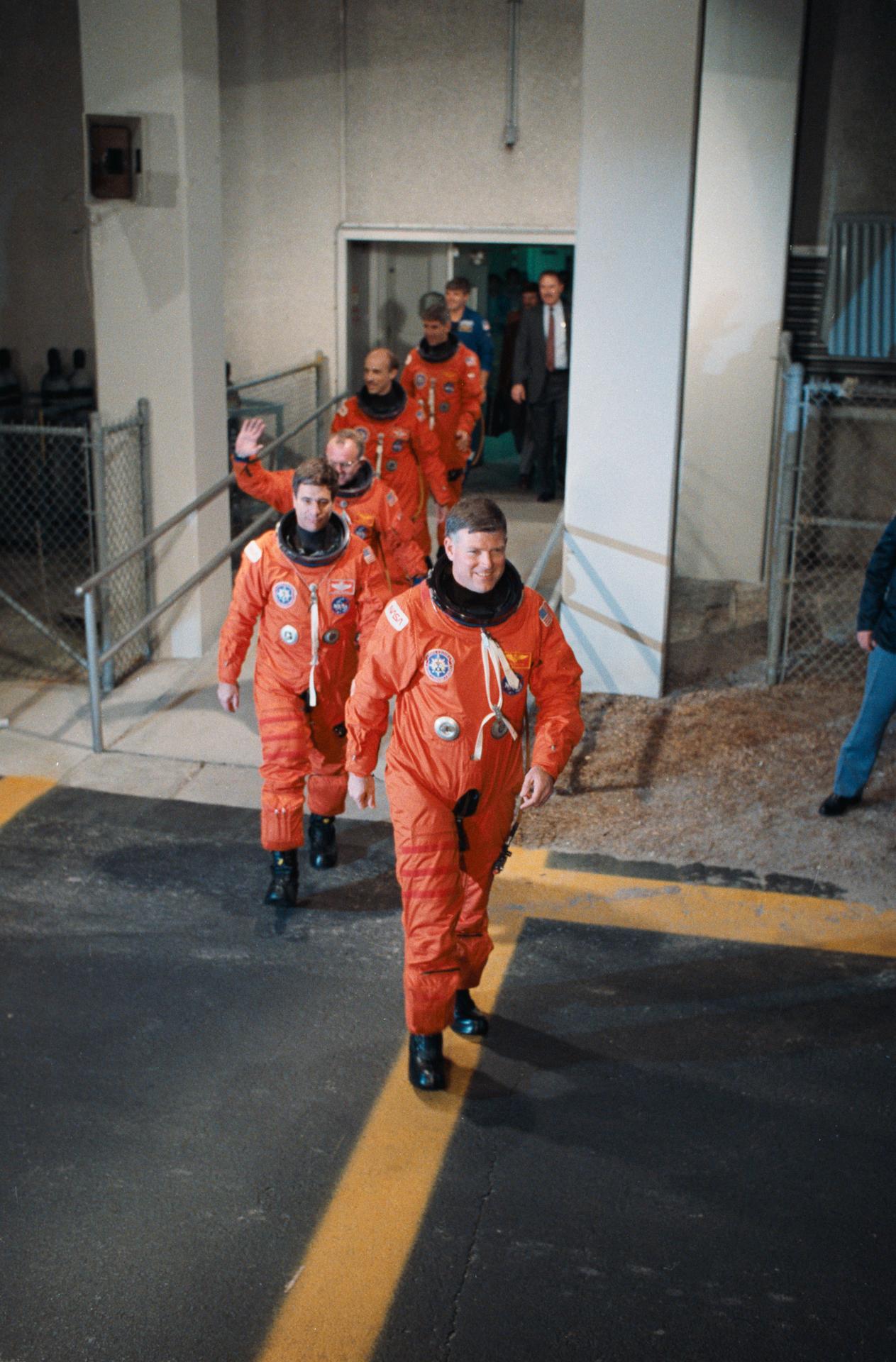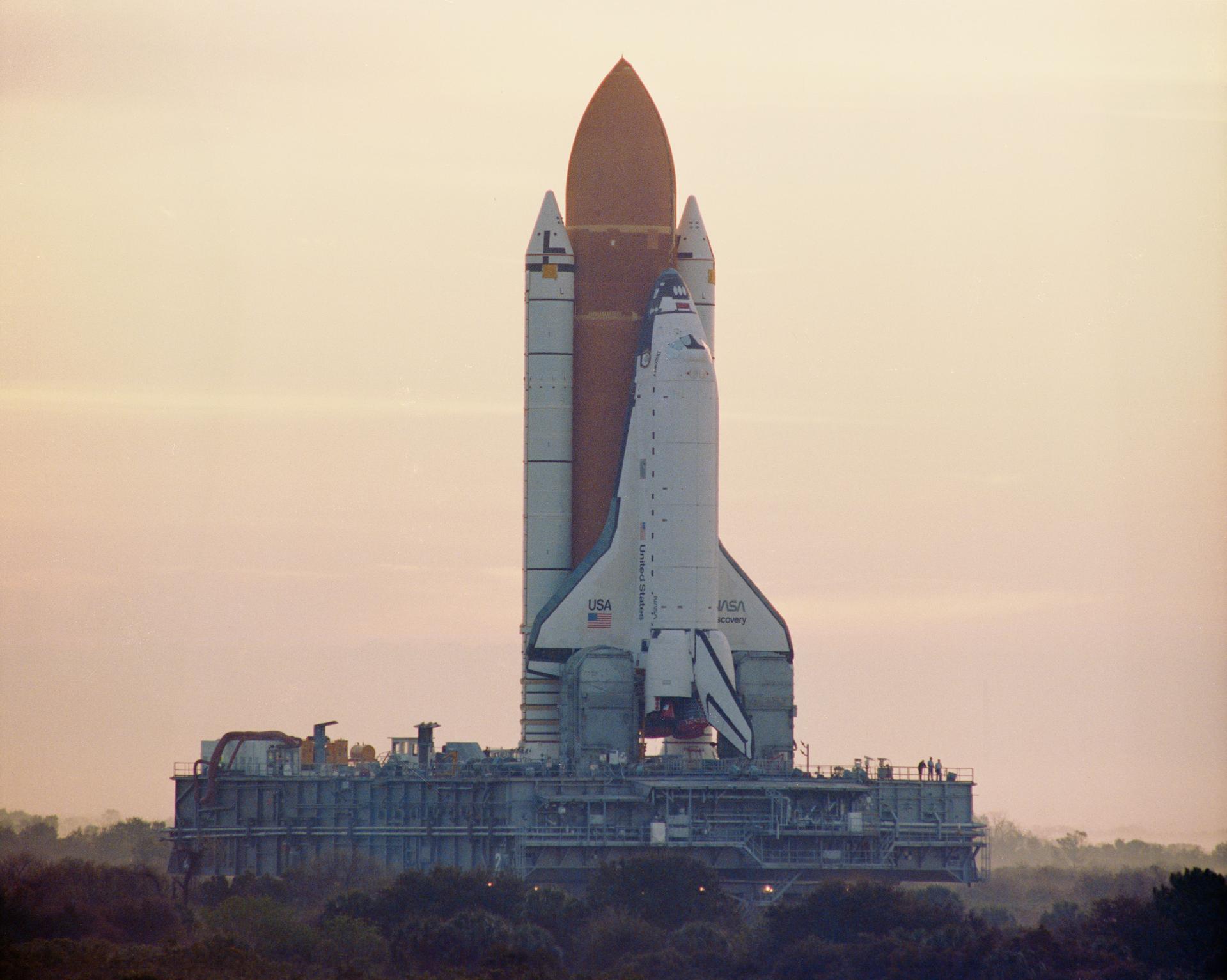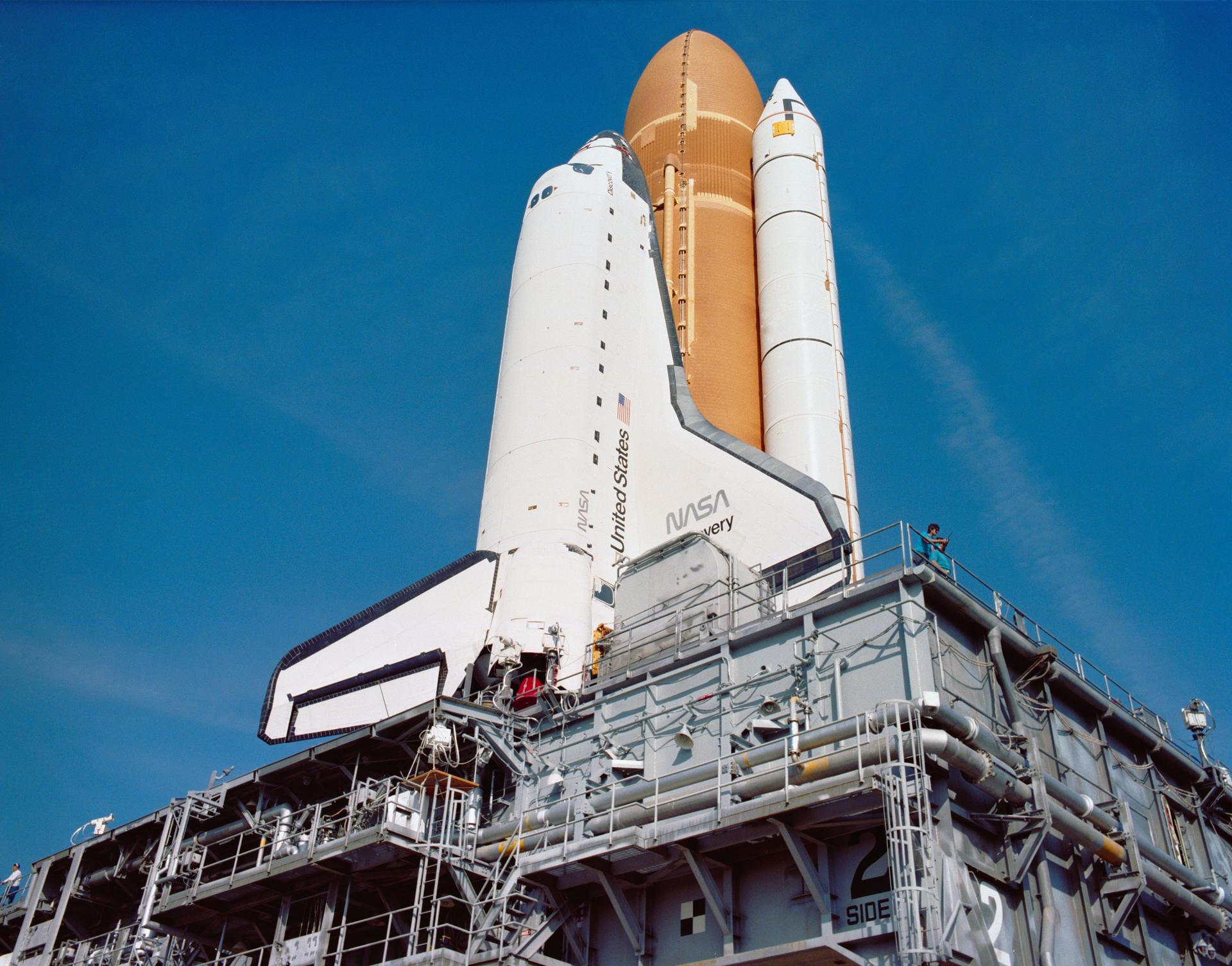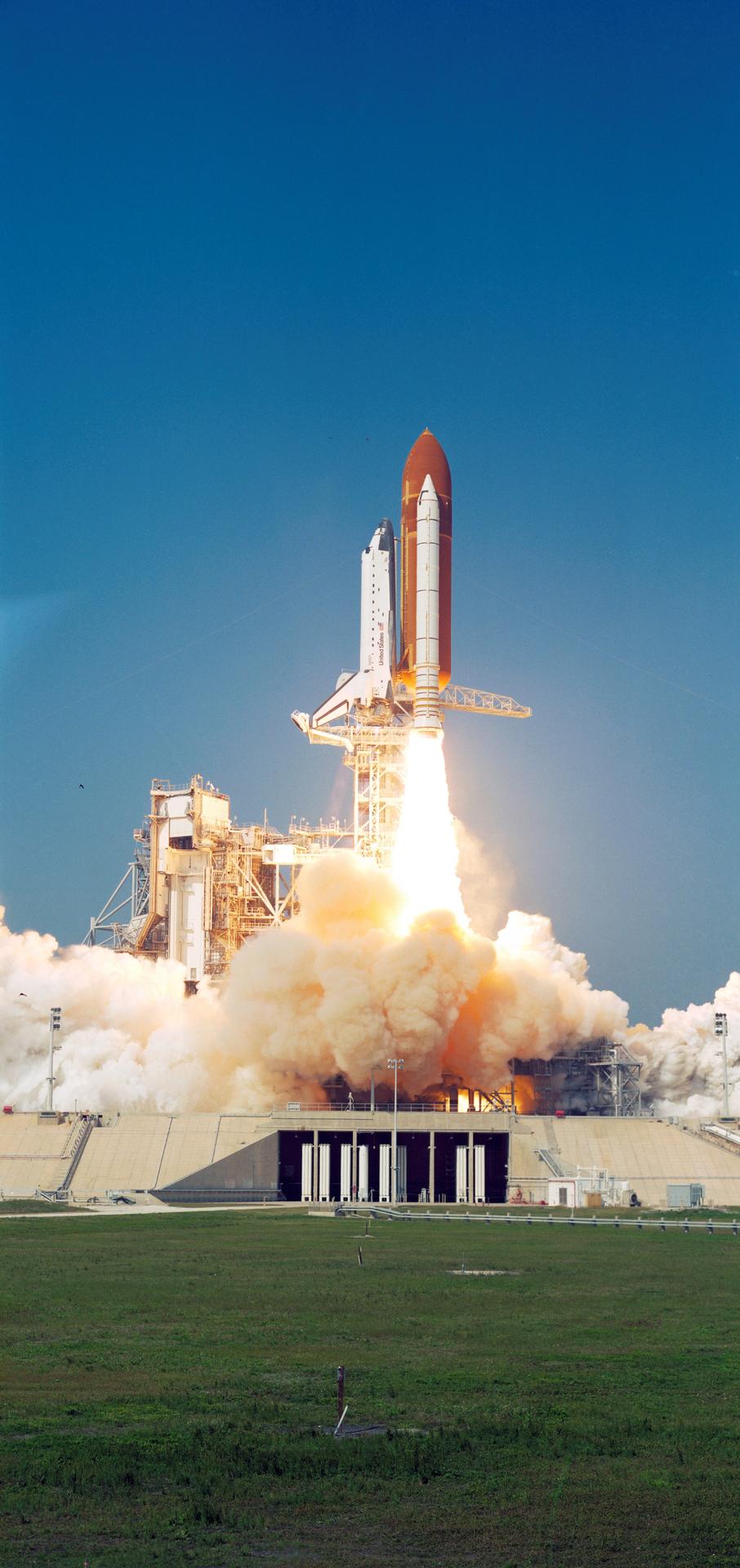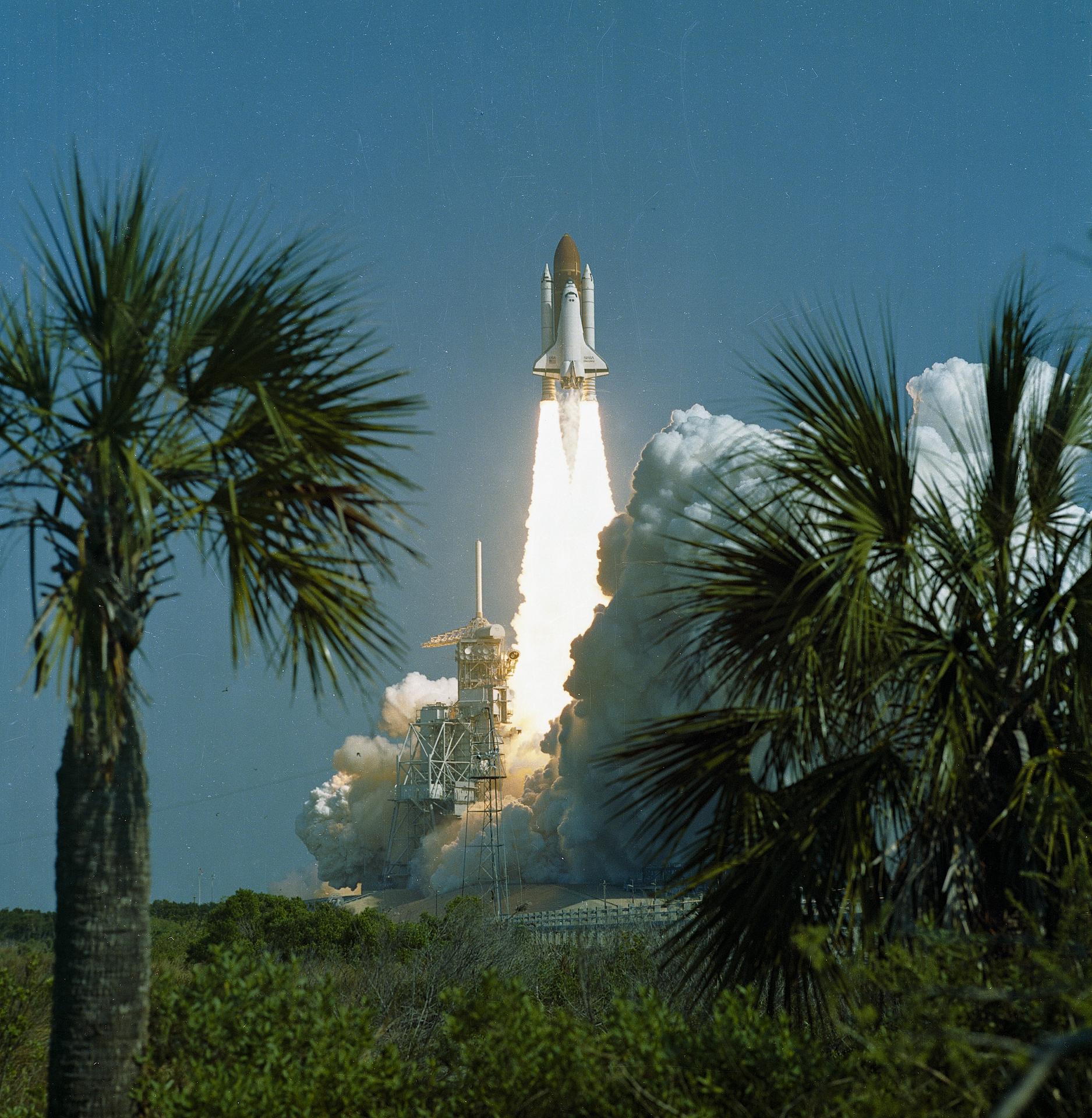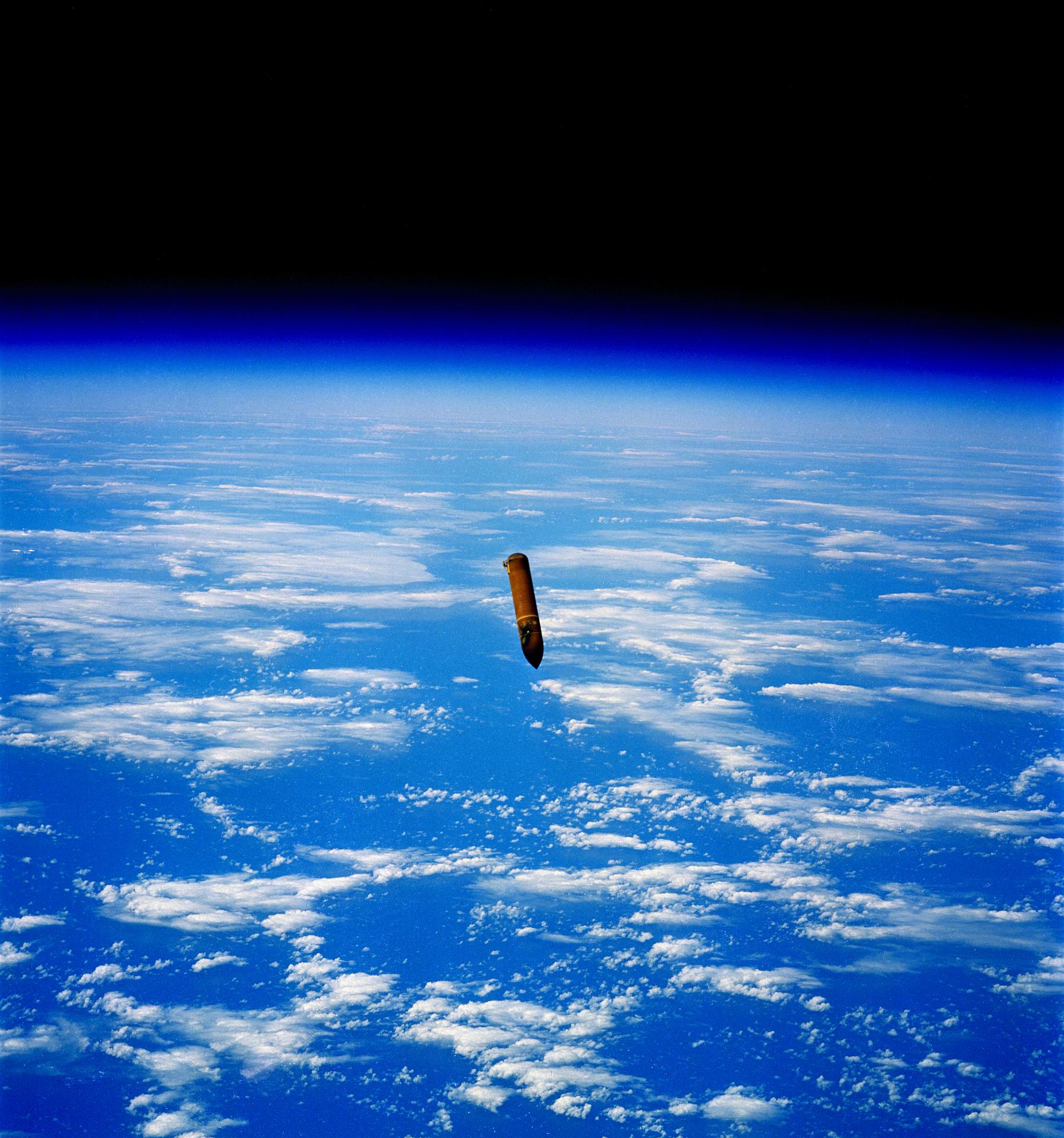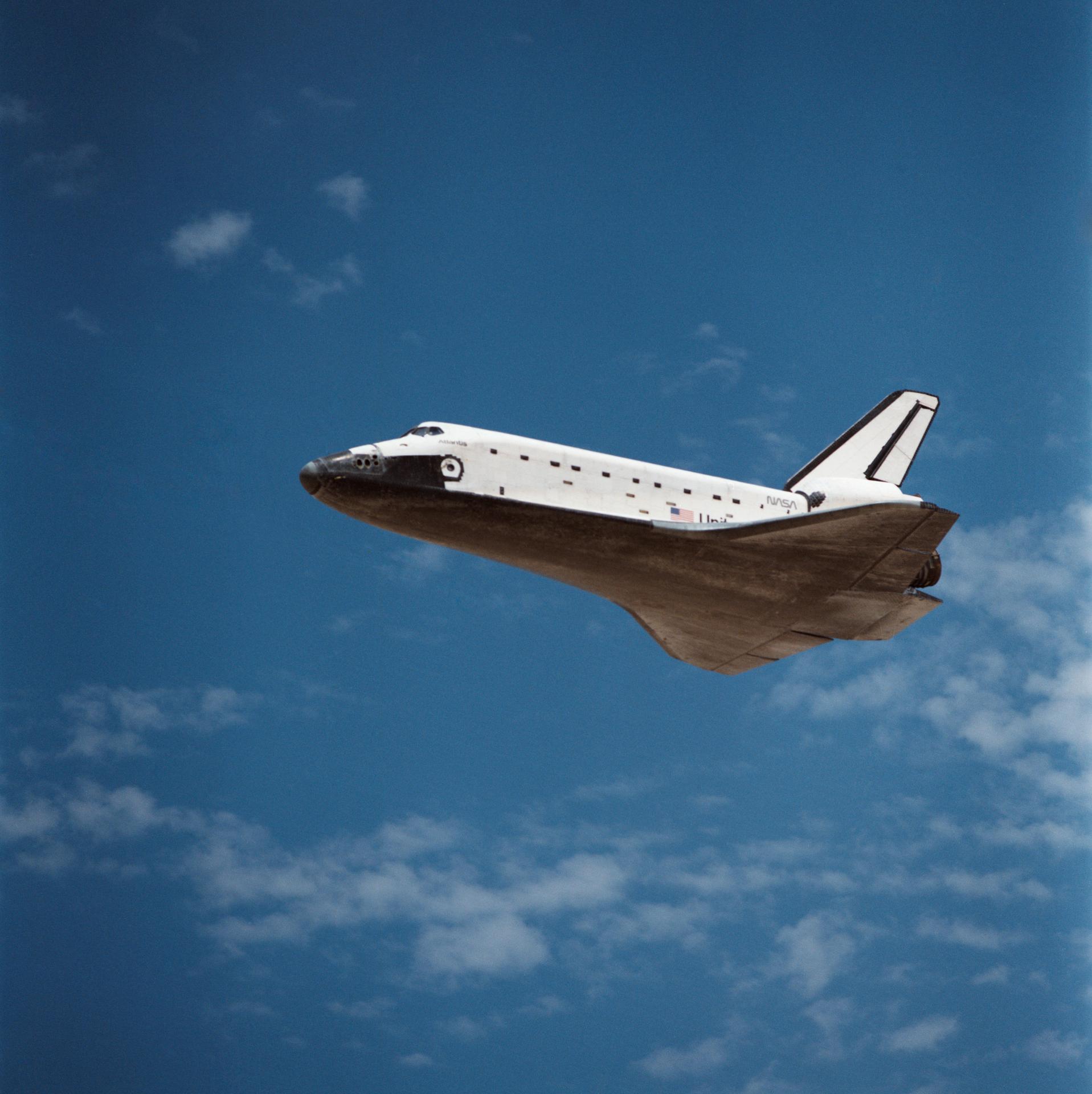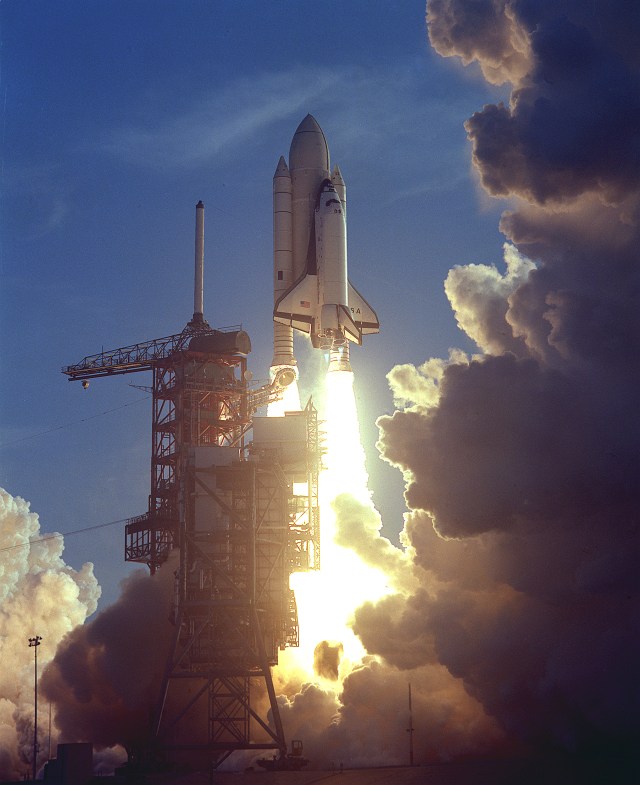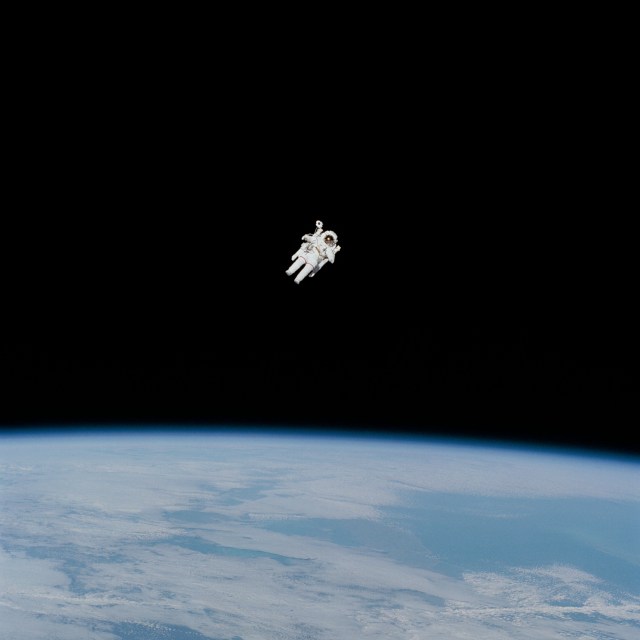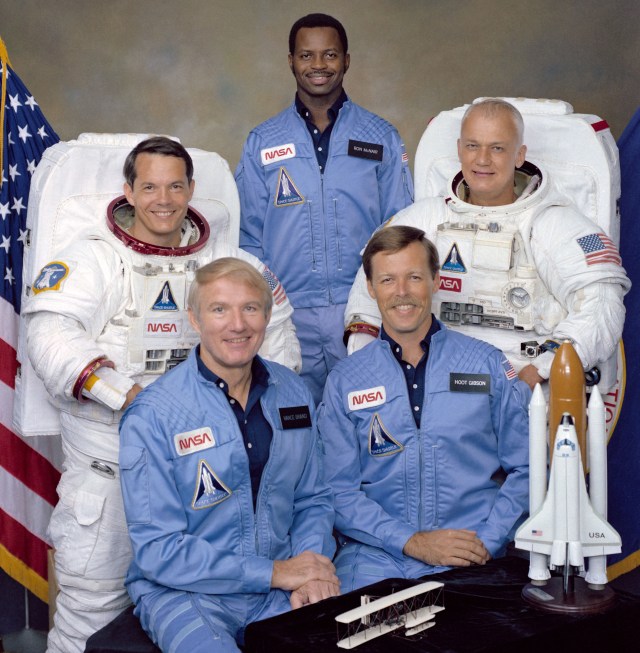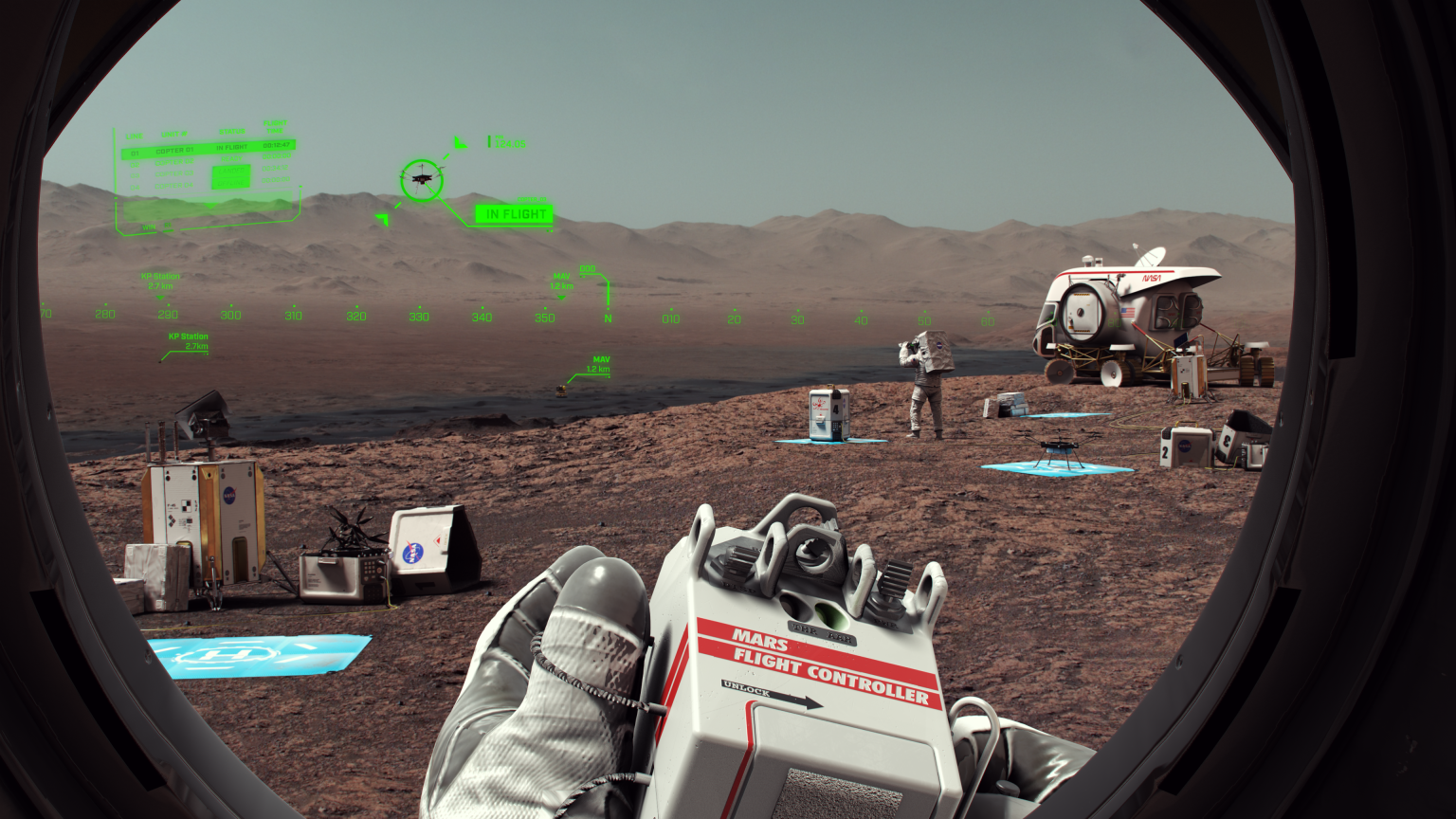
STS-29
STS-29 deployed the Tracking and Data Relay Satellite into Earth's orbit.
Orbiter
mission duration
Launch
Landing
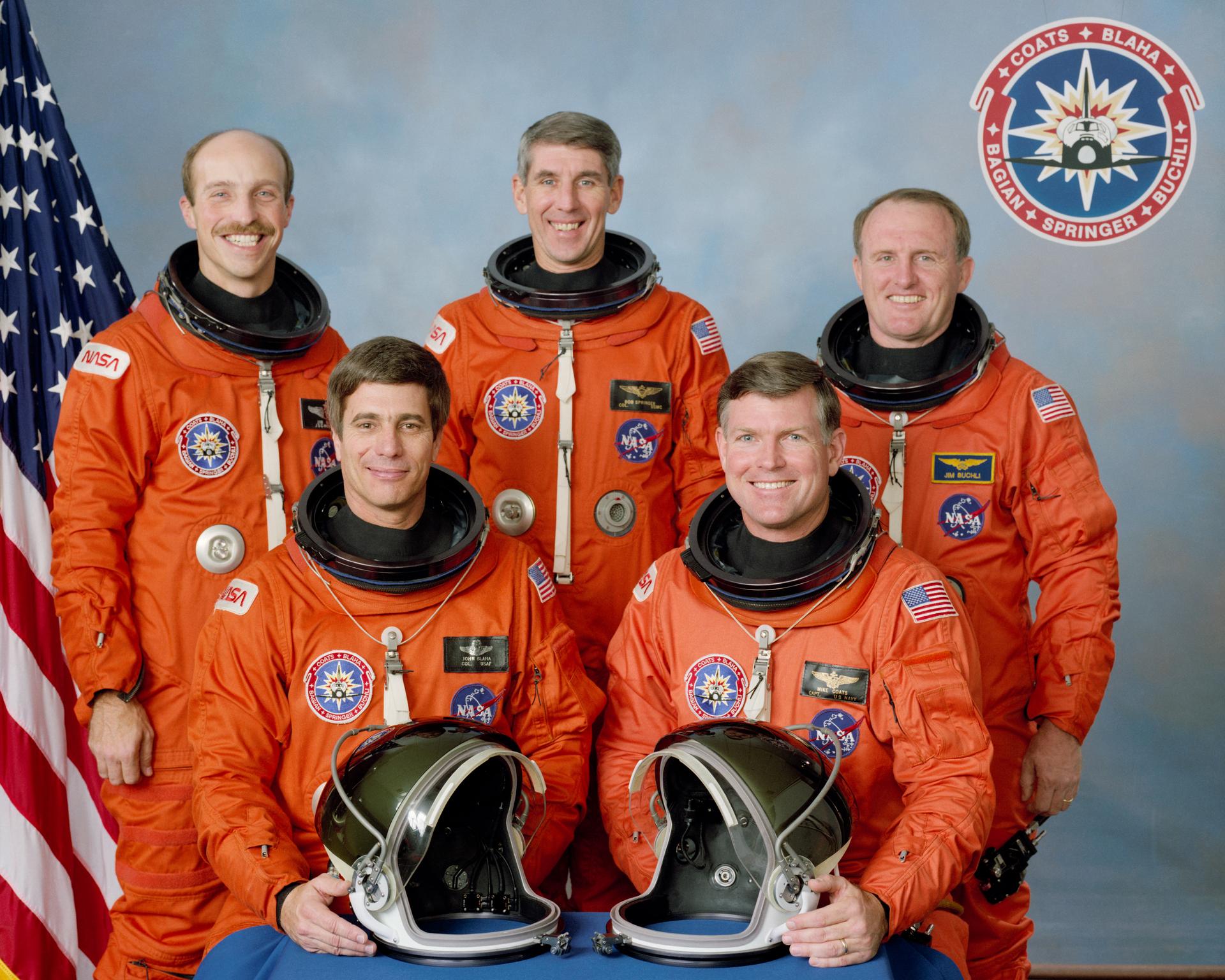
Mission Facts
Mission: Tracking and Data Relay Satellite-4 (TDRS-4)
Space Shuttle: Discovery
Launch Pad: 39B
Launch Weight: 256,357 pounds
Launched: March 13, 1989, 9:57:00 a.m. EST
Landing Site: Edwards Air Force Base, Calif.
Landing: March 18, 1989, 6:35:50 a.m. PST
Landing Weight: 194,789 pounds
Runway: 22
Rollout Distance: 9,339 feet
Rollout Time: 53 seconds
Revolution: 80
Mission Duration: 4 days, 23 hours, 38 minutes, 50 seconds
Returned to Kennedy Space Center: March 24, 1989
Orbit Altitude: 184 nautical miles
Orbit Inclination: 28.5 degrees
Miles Traveled: 2 million
Crew
Michael L. Coats, Commander
John E. Blaha, Pilot
James P. Bagian, Mission Specialist
Robert C. Springer, Mission Specialist
James F. Buchli, Mission Specialist
Launch Highlights
The launch manifested for February 18 was reassessed for a late February/early March launch to replace suspect liquid oxygen turbopumps on Discovery’s three main engines and faulty master events controller. The launch on March 13 was delayed 1 hour, 50 minutes due to morning ground fog and upper winds.
Mission Highlights
The primary payload, Tracking and Data Relay Satellite-4 (TDRS-4) which was attached to an Inertial Upper Stage (IUS), became the third TDRS to be deployed. After deployment, the IUS propelled the satellite to a geosynchronous orbit. Secondary payloads: Orbiter Experiments Autonomous Supporting Instrumentation System-1 (OASIS-1); Space Station Heat Pipe Advanced Radiator Experiment (SHARE); Protein Crystal Growth (PCG); Chromosomes and Plant Cell Division (CHROMEX); two Shuttle Student Involvement Program (SSIP) experiments; and Air Force experiment using orbiter as calibration target for ground-based experiment for Air Force Maui Optical Site (AMOS) in Hawaii. Crew also photographed Earth with a hand-held IMAX camera.
STS-29
Shuttle News
Retired Space Shuttle Locations
Shuttle Atlantis – Kennedy Space Center Visitor Complex Shuttle Discovery – Steven F. Udvar-Hazy Center Shuttle Endeavour – California Science…
Read the Story



























